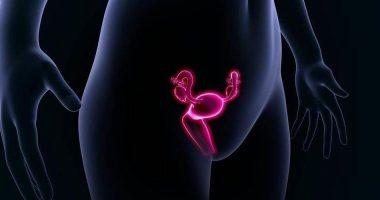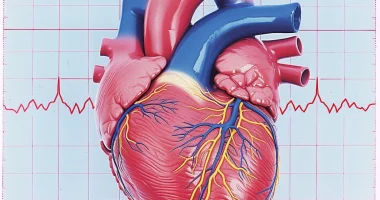Cerebral palsy
Definition
Infantile cerebral palsy (ICP) is a term that unites a group of movement disorders resulting from damage to various brain structures in the perinatal period. Cerebral palsy may cause intellectual impairment, mental disorders, epilepsy, hearing, and visual impairment. Cerebral palsy is diagnosed mainly by clinical and anamnestic data. The algorithm of examination of a child with cerebral palsy is aimed at identifying concomitant pathology and excluding other congenital or postnatal pathology. People who have cerebral palsy should undergo rehabilitation therapy for life and receive medical, surgical, and physiotherapeutic treatment as needed.
General information
According to world statistics, cerebral palsy occurs at a rate of 1.7-7 cases per 1,000 children under one year of age. Among premature babies, the incidence of cerebral palsy is ten times higher than the statistical average. According to recent studies, about 40-50% of children with cerebral palsy were born as a result of premature birth.
Among the reasons for the increase in the number of cerebral palsy patients is the progressive development of neonatology, which now allows nursing infants with various pathologies, including premature newborns weighing 500g or more.
Causes of cerebral palsy
According to modern concepts, cerebral palsy occurs due to the impact on the child’s CNS of various damaging factors that cause abnormal development or death of certain brain parts. Moreover, these factors occur in the perinatal period, i.e., before, during, and immediately after the child’s birth (the first four weeks of life). The main pathogenetic link in the formation of infantile cerebral palsy is hypoxia, to the development of which various causative factors of cerebral palsy lead. First of all, hypoxia affects those parts of the brain that are responsible for maintaining balance and providing motor reflex mechanisms. As a result, muscle tone disorders, paresis and paralysis, and pathological motor acts typical of cerebral palsy occur.
The etiologic factor of cerebral palsy acting during intrauterine development is various pathologies of pregnancy:
- fetoplacental insufficiency
- premature placental abruption
- toxicoses
- maternal nephropathy
- Rh conflict
- cytomegalovirus
- rubella
- toxoplasmosis
- herpes
- syphilis.
Somatic diseases of the mother (diabetes mellitus, hypothyroidism, congenital and acquired heart defects, arterial hypertension) and traumas suffered by a woman during pregnancy can also cause the development of infantile cerebral palsy.
Risk factors
Risk factors for cerebral palsy that affect the baby during labor include:
- breech birth
- rapid labor
- premature birth
- narrow pelvis
- large fruit
- excessive labor
- prolonged labor
- obstetrics
- prolonged anhydrous period before delivery.
Only in some cases birth trauma is the sole cause of cerebral palsy. Often, a difficult birth resulting in cerebral palsy is a consequence of an existing intrauterine pathology.
The main risk factors for cerebral palsy in the postpartum period are asphyxia and hemolytic disease of the newborn. Asphyxia of the newborn resulting in cerebral palsy can be associated with amniotic fluid aspiration, various lung malformations, and pregnancy pathology. A more common postnatal cause of cerebral palsy is toxic brain damage from hemolytic disease, which develops as a result of blood incompatibility or immunologic conflict between the fetus and the mother.
Classification of cerebral palsy
According to the location of the affected brain area in neurology, cerebral palsy is classified into five types. The most common form of cerebral palsy is spastic diplegia. According to various data, infantile cerebral palsy of this form makes up 40 to 80% of the total number of cerebral palsy cases. The basis of this form of cerebral palsy is damage to the motor centers, leading to the development of paresis, more pronounced in the legs. When the motor centers of only one hemisphere are damaged, the hemiparetic form of cerebral palsy occurs, manifested by paresis of the arm and leg on the side opposite to the affected hemisphere.
About a quarter of cases of cerebral palsy have a hyperkinetic form associated with damage to subcortical structures. Clinically, this form of cerebral palsy manifests by involuntary movements—hyperkineses—that increase when the child is agitated or tired.
The most severe form of cerebral palsy is called double hemiplegia. In this variant, cerebral palsy is the result of total damage to both hemispheres of the brain, leading to muscle stiffness that makes children unable to stand, sit, or even hold their heads up independently. There are also mixed variants of cerebral palsy, including clinical symptoms characteristic of different forms of cerebral palsy. For example, there is often a combination of hyperkinetic cerebral palsy with spastic diplegia.
Symptoms of cerebral palsy
The clinical picture of cerebral palsy and its severity depends on the localization and depth of damage to brain structures. The first symptom of cerebral palsy may be a delay in the formation of motor skills. A child with cerebral palsy does not hold his head for a long time, does not turn over, is not interested in toys, cannot consciously move limbs, and does not hold toys. When trying to put a child with cerebral palsy on his feet, he does not put his foot on the entire foot but stands on tiptoes.
Paresis in cerebral palsy can be only in one limb, unilateral, and cover all limbs. Insufficient innervation of the speech apparatus causes a speech disorder (dysarthria) in a child with cerebral palsy. If cerebral palsy is accompanied by paresis of the muscles of the pharynx and larynx, there are problems with swallowing (dysphagia). Often, cerebral palsy is accompanied by a significant increase in muscle tone.
In the future, children with cerebral palsy will have paretic limbs that lag behind in physical development, becoming thinner and shorter than healthy limbs. As a consequence, skeletal deformities typical for cerebral palsy (scoliosis, chest deformities) will be formed.
The infantile cerebral palsy hyperkinetic form is manifested by suddenly occurring involuntary motor acts: turns or nods of the head, twitches, the appearance of facial grimaces, and flamboyant poses, or movements.
In infantile cerebral palsy, strabismus, functional disorders of the gastrointestinal tract, respiratory disorders, and urinary incontinence may be observed. In about 20-40% of cases, cerebral palsy occurs with epilepsy. Up to 60% of children with cerebral palsy have vision problems. There may be hearing loss or complete deafness.
Often cerebral palsy is accompanied by various degrees of oligophrenia, mental retardation, perceptual disorders, learning disabilities, behavioral abnormalities, etc. However, up to 35% of children with cerebral palsy have average intelligence, and in 33% of cerebral palsy cases, intellectual impairment is mild.
Infantile cerebral palsy is a chronic but not progressive disease. As the child grows and his CNS develops, previously hidden pathological manifestations may be revealed, which create a sense of so-called “false progression” of the disease. Deterioration of a child with cerebral palsy may also be due to secondary complications: epilepsy, stroke, hemorrhage, use of anesthesia, or severe somatic disease.
Diagnosis of cerebral palsy
There are no specific diagnostic criteria for cerebral palsy in children. However, some symptoms typical of cerebral palsy immediately attract the pediatrician’s attention. These include a low Apgar score immediately after birth, abnormal motor activity, muscle tone disorders, lagging behind the child in psychophysical development, and lack of contact with the mother. Such signs always alert doctors to cerebral palsy and indicate that the child must be consulted by a pediatric neurologist.
If cerebral palsy is suspected, a thorough neurological examination of the child is necessary. Electrophysiological examination methods are also used in the diagnosis of cerebral palsy:
- electroencephalography
- electromyography and electroneurography
- transcranial magnetic stimulation.
Medical and surgical treatment of cerebral palsy
The treatment of cerebral palsy with medications is mainly symptomatic and is aimed at controlling a specific symptom of cerebral palsy or complications. For example, anticonvulsants are prescribed when cerebral palsy is combined with epileptic seizures, antispastic drugs are prescribed for increased muscle tone, and analgesics and antispasmodics are prescribed for cerebral palsy with chronic pain syndrome.
Indications for surgical treatment of infantile cerebral palsy are contractures formed as a result of prolonged muscle spasticity and limiting the patient’s motor activity. Tenotomies are most often used in cerebral palsy to create a supporting position for the paralyzed limb. Bone lengthening, tendon grafting, and other surgeries may be used to stabilize the skeleton in cases of cerebral palsy. If cerebral palsy is manifested by gross symmetrical muscle spasticity leading to the development of contractures and pain syndrome, a patient with cerebral palsy may undergo spinal rhizotomy to interrupt pathological impulses coming from the spinal cord.
All these treatment options are available in more than 999 hospitals worldwide (https://doctor.global/results/diseases/cerebral-palsy). For example, Selective dorsal rhizotomy can be performed in 12 clinics across Turkey for an approximate price of $6.6 K (https://doctor.global/results/asia/turkey/all-cities/all-specializations/procedures/selective-dorsal-rhizotomy).
Prognosis and prevention of cerebral palsy
The prognosis for cerebral palsy directly depends on the form of cerebral palsy and the timeliness and continuity of rehabilitation treatment. In some cases, cerebral palsy leads to profound disability. But most often, it manages to compensate for the existing disorders to a certain extent because the growing and developing brain of children, including a child with cerebral palsy, has significant potential and flexibility, thanks to which healthy areas of brain tissue can take over the functions of damaged structures.
The prevention of cerebral palsy in the prenatal period consists of the correct management of pregnancy, which allows timely diagnosis of conditions threatening the fetus and prevents the development of fetal hypoxia. Afterward, the choice of the optimal method of delivery and proper management of labor is important for the prevention of cerebral palsy.

